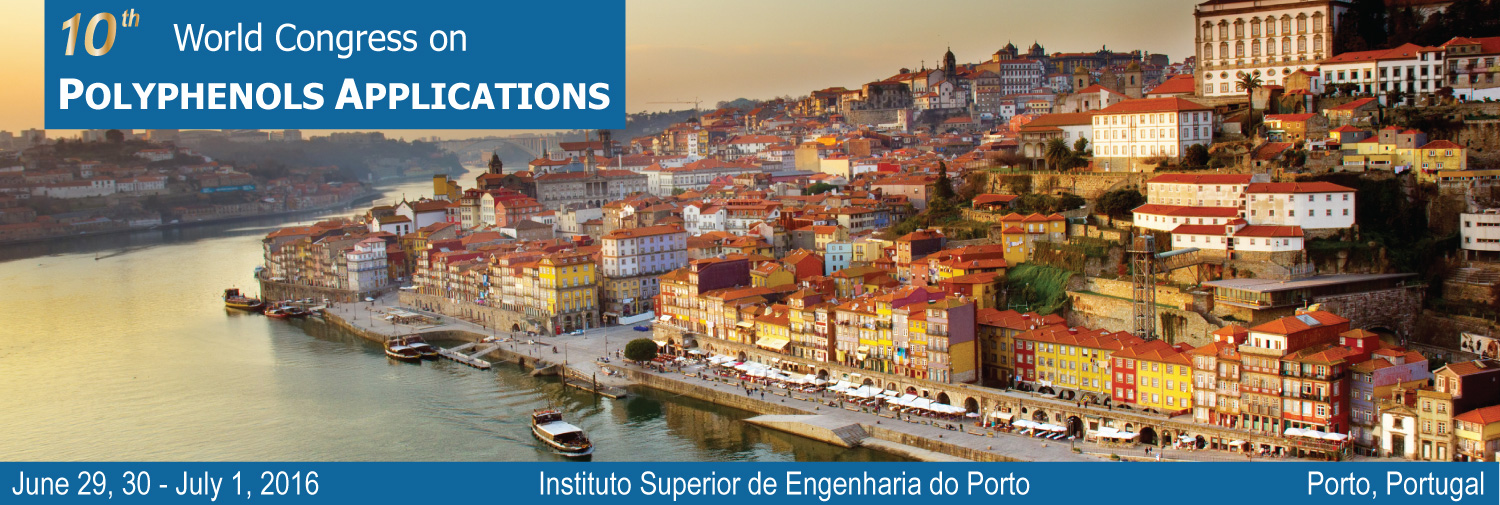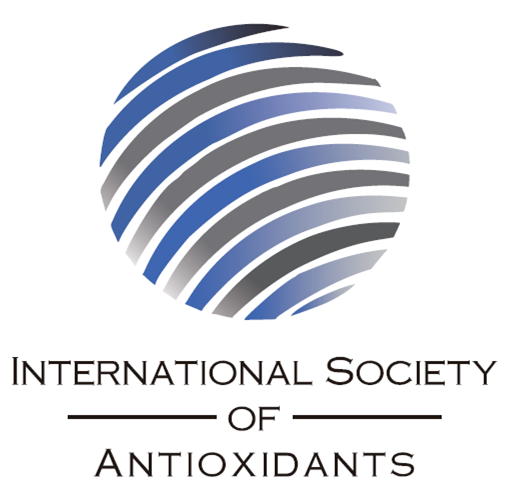News
Fermentation of bioactive solid lipid nanoparticles by human gut microbiota
 Pr. Raquel Madureira, from Universidade Católica Portuguesa in Portugal, will highlight the subject Fermentation of bioactive solid lipid nanoparticles by human gut microbiota, in her presentation at Porto Polyphenols 2016.
Pr. Raquel Madureira, from Universidade Católica Portuguesa in Portugal, will highlight the subject Fermentation of bioactive solid lipid nanoparticles by human gut microbiota, in her presentation at Porto Polyphenols 2016.
Pr. Madureira concludes her recent studies as follows: Solid lipid nanoparticles (SLN) can be used for the oral delivery of phenolic compounds in order to protect them from the harsh conditions of digestion and improve their bioavailability in the intestinal epithelium. Recently, the production and characterization of SLN loaded with rosmarinic acid and herbal extracts was performed for future use as functional food ingredients. On the other hand, a hot topic of the moment is the knowledge that diet components have a huge impact on gut microbiota viability and metabolic activity. Hence, this communication concerns the study of the effect of SLN and released phenolic compounds on gut microbiota. I will make an overview on the results of the fermentations in anaerobic batch cultures using volunteer human faeces during 48 h. The impact of these phenolic compounds free and encapsulated in SLN on the main gut bacterial groups population and metabolic activities will be discussed.
Anthocyanins and cellular redox signaling: Nrf2 and NF-kB as targets
 Pr. Francesco Cimino from the University of Messina, Italy, will talk about Anthocyanins and cellular redox signaling: Nrf2 and NF-kB as targets at Porto Polyphenols World Congress.
Pr. Francesco Cimino from the University of Messina, Italy, will talk about Anthocyanins and cellular redox signaling: Nrf2 and NF-kB as targets at Porto Polyphenols World Congress.
According to Pr. Cimino, reactive oxygen species (ROS) serve important physiological functions in host defense, and constitute an important second messenger in cell signaling transduction, but several chronic pathological conditions are associated with a status of oxidative stress, that is an unbalance between ROS formation and antioxidant availability. Many plant antioxidants, have been shown able to prevent free radical-related diseases by counteracting cell oxidative stress. However it is now considered that the in vivo beneficial effects of these phytochemicals are unlikely to be explained just by their antioxidant capability.
To register for the conference, please find more information here: http://polyphenols-site.com/registration.
Extracting polyphenols: trying to get the best

According to Pr. Valentão, nature has been a prolific source of interesting compounds for many years. Polyphenols are secondary metabolites found in both terrestrial and marine organisms. They are grouped in several classes resulting from acetate and/or shikimate pathways, being recognized for having a wide array of biological properties. Nevertheless, the exploitation of many plant materials and marine organisms as sources of these compounds is still reduced, due to the lack of popularity or commercial interest. The suitable extraction procedure depends on the class of compounds and on the matrix in which they are contained. Case studies, involving different procedures to obtain bioactive natural extracts enriched in phenolic compounds from distinct classes, will be focused. Terrestrial and marine-derived extracts, containing phlorotannins, flavonoids and cinnamoyl derivatives, and their interference in SNC and gastrointestinal disorders, skin aging and fungal infections will be presented.
For more information about the congress please visit: www.polyphenols-site.com.
Natural and Bioinspired Polyphenols with Antioxidant Properties for Health and Food Applications
 Pr. Alessandra Napolitano from University of Naples "Federico II" of Italy will present on Natural and Bioinspired Polyphenols with Antioxidant Properties for Health and Food Applications.
Pr. Alessandra Napolitano from University of Naples "Federico II" of Italy will present on Natural and Bioinspired Polyphenols with Antioxidant Properties for Health and Food Applications.
According to Pr. Napolitano, the search for novel antioxidants to be used to prevent/control food deterioration or as adjuvants in the treatment of oxidative stress based pathologies has recently spurred considerable interest. In this connection natural compounds and particularly polyphenols that can be easily obtained from accessible vegetable sources or even agricultural wastes are nowadays extensively investigated. The chemopreventive action exerted by polyphenols belonging to the hydroxycinnamate, catechol, catechin, and stilbene groups against the cellular damages brought about by reactive oxygen species (ROS), but also by the reactive nitrosating/nitrating species (RNS) generated in the acidic environment of the stomach from dietary and endogenous nitrite ions is largely documented.
Systemic absorption, metabolism, and bioavailability of dietary procyanidins in pigs
 Professor Hans-Ulrich Humpf from the Institute of Food Chemistry, Westfälische Wilhelms-Universität Münster of Germany will present Systemic absorption, metabolism, and bioavailability of dietary procyanidins in pigs.
Professor Hans-Ulrich Humpf from the Institute of Food Chemistry, Westfälische Wilhelms-Universität Münster of Germany will present Systemic absorption, metabolism, and bioavailability of dietary procyanidins in pigs.
According to Pr. Humpf, procyanidins are oligomers of catechin and epicatechin and they can be found in a large number of foods including various fruits. The daily consumption is estimated to be in the range of approximately 50 mg. Procyanidins are described to exhibit beneficial health effects, however the knowledge about their absorption and meta-bolic fate is rather limited. To study the systemic absorption and metabolism of pro-cyani¬dins a kinetic study with pigs was performed as they have a gastro-intestinal tract very similar to humans. After oral application of a procyanidin extract or a single dose of pure procyanidin B4 to pigs urine and plasma samples were collected and analyzed by HPLC-MS/MS. The results clearly indicate the absorption of low molecular weight procyanidins (dimers and trimers) in the nanomolar range and their metabolism to small phenolic degradation products during the passage of the gastro-intestinal tract.
For mor information about the congress please visit: www.polyphenols-site.com.
More Articles...
- Neuroprotective Role of Natural Polyphenols: a Look to the Potentiality of Elderberry Extracts
- Industrial dosage forms to improve the oral bioavailability of resveratrol
- The hormetic role of redox-active polyphenols in human health and disease
- Are polyphenols strong dietary agents against neurotoxicity and neurodegeneration?




